Making a tabletop RPG is a very fun, fulfilling, and creative endeavor. There are some parts of it that are hard work, but there’s never been a better time than now to set yourself to the task and make use of available resources. Whether it’s a metalhead’s viking fantasy, a surreal and abstract dreamscape, or a fantasy heartbreaker, there are many different ways to go about mechanics, layout, and distribution of your game.
We’ve done three successful Kickstarters for tabletop RPG projects over the years and are in the midst of wrapping up production on Nebula Chaos. I’ve been playing TTRPGs for over 20 years. I’ve hacked and homebrewed for just about as long, but have made an earnest effort to design my own system over the course of the past decade. Conservatively, between online sales and our sales partners, we’ve moved a couple thousand units. There are even more games we’re working on that have yet to be released, but I’ve gone through the gamut a few times well enough to feel I have some insight to offer aspiring designers.
The very first step is, of course, the idea for a game. If you haven’t decided yet, maybe think of a genre (or a mashup of a genre) you want to focus on, a mechanic, or a narrative idea you’d like to flesh out. I came up with the idea for Justice Velocity after drinking margaritas and seeing a Fast & Furious movie in theaters, all while wondering how it might work as a tabletop RPG.
If you’ve found this article, perhaps you already have a genre, theme, or mechanic idea in mind. Maybe you already have playtested things a few times with your friends and have your own notes and ideas. In any event, here are some ideas on what to do beyond that:
Determine Scope and Resources
This is perhaps the most important part of any project’s completion: setting realistic expectations about your time, budget, schedule, availability, resources, and workload from the outset in order to get a final desirable product. TTRPGs can be as little as one page or as much as hundreds of pages spread out through multiple books. Determining what you have available and what’s within reason to accomplish is important to scope out from the jump.
If you’re reading this, odds are you do not have a major publisher behind you, but are interested in turning your passion project into a reality. Much of this scope phase will be determined by your mechanics and aesthetic determinations as well, but it’s good to know what your end goal is in terms of length, art and design content, and what you will need in order to accomplish that goal. Maybe it’s best to start on smaller projects like a one-page RPG or a basic adventure module instead of diving headfirst into your several-hundred page D&D killer.
By and large, many indie titles tend to be on the shorter side for this reason: they are made by smaller teams (or individuals) with fewer resources. So, being realistic about your expectations can help guide your overall trajectory. For our games, we tend to target a sub 100 page length and make the core rules maybe 20-30-ish pages, for instance. I believe this helps to simplify the game idea overall, makes it more easily accessible, and quicker to read and play. That being said, there are also plenty of big and crunchy indie titles filling tomes with hundreds of pages of lore, which are also cool in their own way. So, if you have the resources, desire, and drive to put out something like that, nothing is stopping you, but knowing that’s the end goal is important.
Budgets can also vary wildly and depend on what you’re producing. Print-on-demand services such as DriveThruRPG are very helpful for indie tabletop designers and you can find a cost calculator here. Offset printing is very nice, but can also be very costly. You can ask for a quote from a local printer or someone online as well. You can also release digitally through itch.io, DriveThruRPG, or your own digital storefront. Some RPGs require multiple editors and writers, as well as artists, and layout designers. You can shop around on Fiverr, online forums/Facebook Groups/Discord Servers, or your own personal connections to see how much certain things will cost. There are also marketing and advertising considerations if you are going to create a commercially available product. These can all add up really quickly, so many TTRPG designers tend to run Kickstarters or other crowdfunding campaigns to raise funds.
Personally, I try to do as many things by myself as possible, but often commision artists and layout designers. We also run Kickstarters to raise funds. Researching the dollars and cents as well as the amount of sweat your project will entail will be pretty helpful to keep in mind, both from the outset and throughout the duration of the project.
Flesh out the Initial Game and Narrative Idea
Most likely you want to create a tabletop RPG because, either: 1) the game you are looking for does not exist, or 2) the game you are looking for does not exist in the same way you would like it to, or 3) you want to add your own spin on things.
In any of these cases, once you have a basic idea, you’re going to want to A) look into existing material to inform your narrative and mechanics and/or B) try smaller playtests to see if the basic mechanics and game ideas will work as you envision them.
Since I already have a core system I’ve been developing for a while (the Polyhedra Core Engine), I often start by putting together short personal notes, explaining the mechanics to prospective players, and then playtesting from there. Sometimes just getting the raw idea out there and seeing it emerge from gameplay is very inspiring. If you’re starting a new system from scratch, running mock combats or small scale resolutions while making the rules can be very helpful.
Other times, I start projects by diving into similar or adjacent material. With Justice Velocity, I ultimately looked (primarily) at the vehicle systems used in about any game I could get my hands on: Shadowrun, D&D, Spirit of ’77, Feng Shui, Spycraft, etc. I also rewatched several Fast & Furious movies and other action movies. I read up on Bōsōzoku and the history of street racing. Before starting Nebula Chaos, I drudged up every sci-fi RPG I could find before deciding I wanted to make my own. I looked at spaceship combat mechanics from RPGs and board games and watched a bunch of sci-fi films. This process is fundamentally a research gathering phase, or more specifically in some instances, a market research phase.
If you’re making a game for yourself and your friends, you just have to make something that you think is cool, but seeing what others have done and drawing on existing source material can definitely make your game better and more well-rounded. You incorporate things you like and wrap your head around the general vibe of the genre or narratives you are trying to convey. If you’re making a game that’s publicly/commercially available, figuring out if you have a niche, an important spin on the genre, or something unique and worthwhile to offer your audience is also very important.
Start your notes out with a basic sketch of the game and mechanics you’d like to implement and develop it further from there. I typically use GoogleDocs and GoogleSheets (helpful for tables) for initial sketching, but sometimes use notebooks/pen and paper. Ultimately, you’ll develop a manuscript (usually plain text) which can be edited and formatted when it comes time for the graphic design and layout phase.
Develop Mechanics and Game Design Sensibilities
Many RPGs are delineated on a spectrum of the relative complexity of their rules: i.e. “rules-lite” vs. “crunchy”. One page RPGs (such as Honey Heist or Lasers & Feelings) tend to be very light on rules, whereas a game like D&D 5E, while relatively streamlined compared to previous editions, has a pretty decent degree of complexity to it. There are, of course, others that are even more complex.
An important factor is figuring out how in-depth you want the rules mechanics to be, as it is also an aesthetic decision which will greatly impact the experience of play. Generally, more abstract rules can be faster and looser, but lack the tactical and granular specificity of more complex rulesets. Of course, many rule systems can be too simple or too complex for what you’re trying to accomplish.
Our games tend to land somewhere in the middle, for instance (more rules than a one-page RPG, but snappy enough to get up and running quicker than D&D). The density of your rules mechanics will go hand-in-hand with aesthetic orientation, the narratives you are trying to tell, as well as the scope and overall direction of your game.
In tabletop RPG communities there is also sometimes speak of GNS theory, which posits that player experience in games are informed by three elements: gamism, narrativism, and simulationism, and that certain games lean towards certain styles of play. Most games have elements of all of these.
More traditional RPGs lean towards gamist or simulationist. Simulationist games are where players are “simulating” being a character in the world that is being facilitated by the DM/GM. Players have autonomy over their own character’s actions within the rules of the game, but typically no one else’s, and there is some approximation of physics or other “real world” elements. Big games like this are D&D, Pathfinder, and mostly what people consider when they think of RPGs.
Gamist elements prioritize rules of the game such as spell lists, as well as a game-oriented mechanic of overcoming increasingly more powerful adversaries. D&D 4E is very gamist, as are many so-called OSR games.
Narrativist-focused games are looser and more abstract, in that they are more “cinematic” or focused on building a compelling narrative. As such, many rules in a narrativist-driven game might focus less on individuals, their combat mechanics, etc., and can allow for players to have more direct narrative control over the story. Of course, players often still have their own characters, but sharing narrative control or control over other players’ characters is a big part of narrativist RPGs. The big game for this is Apocalypse World and its titular engine: Powered by the Apocalypse, which many indie RPGs run on (a few popular examples being Monsterhearts, Thirsty Sword Lesbians, Monster of the Week, Masks, Dungeon World, and Ironsworn).
(PbtA also is used in World Wide Wrestling. A quick aside/fun fact: Nathan Paoletta, the creator of WWW, also did the layout for Justice Velocity and will be doing the layout for Nebula Chaos.)
As stated, GNS is a popular theory, but it only has so much descriptive utility, and whichever implementation you decide on will likely include all of these elements. This is all to say that the idea of how your game will be played and what elements of RPGs you enjoy building towards the most will be a fundamental direction on which you build mechanics.
There are also what are referred to as the “three pillars” of RPGs: social/roleplaying, exploration, and combat. Sometimes there is overlap, but each of these are different elements of gameplay in RPGs that you should think about when designing your game and how it will handle them. Social/roleplaying refers to how characters will interact with NPCs and each other, and how interpersonal interactions are resolved. Exploration can mean exploring a world map, city, dungeon, or conducting some other sort of (primarily) spatial investigation. Combat is a very common pillar in roleplaying games. Some sessions and even games are not very combat-centric, but it is traditionally an important part of the TTRPG experience. Keep in mind how your game will handle each of these pillars, and design mechanics that will work well with what you are trying to achieve.
Also worth considering is whether you are going to create your own system from scratch or use an existing ruleset to build upon. Many people use PbtA, D&D’s Open Game License, Mörk Borg’s third party license, or others. We also have a third party license here. This all depends on your goals, what type of game you’re building, the flexibility of your system, its proximity to existing systems, etc. If you will be commercially releasing your product, you should also consider intellectual property and following the rules of existing game licenses. Luckily, there has been a lot of case law showing that no one can copyright rolling dice and adding numbers to them to play a game, but there are certain restrictions on how that information can be described, copied, presented, or reproduced.
Speaking of dice — are you using those in your game? Most TTRPGs do, but some use decks of playing cards, dominoes, a jenga tower, or other random/semi-random elements. There are also dice-less RPGs such as Henshin, where players gain and use tokens. There are specialty dice for some games, with different markings for hits and misses, like in that one Star Wars game. There are dice pools and success systems like in Shadowrun or Star Wars WEG D6. Many popular RPGs use d20s and other polyhedral dice, some use only D6s (most of our games do), but there are also 2d20 systems, percentile systems, “roll under / roll over” mechanics, exploding dice, and others. I won’t get into all of this here, but these are some popular dice/non-dice mechanics and implementations for you to consider or research.
The most popular resolution mechanic tends to be rolling dice and adding player stats to see if they meet or exceed a target number or opposed roll, but there are varying interpretations and different ideas that diverge from this or have their own way of doing things.
Once you figure out or adapt a specific resolution mechanic, you can generate more specific rules from there, including important ones regarding character creation, combat, spells/abilities, monsters/enemies, and items/equipment. These all can be expanded significantly depending on the setting, mechanic sensibilities, and more, but many will spring from your initial choice of resolution mechanic.
As a brief example of game mechanics and overview: in the Polyhedra Core System, we do a “point buy” system for character creation, where characters are generated by allocating stats to Power, Dexterity, Personality, Will, and Intelligence. From there, they can buy certain skills, spells, or abilities. Hit points, speed, and other statistics are generated from base stats. It’s a classless system that uses a base 2d6 + Stat (+/- mods) as a resolution mechanic. Will is a stat that also determines (what are essentially) mana points for spellcasting/abilities. There’s also a token players have once per session that they can spend to boost a roll (called “High Octane Mode” in Justice Velocity, or a “Chaos Token” in Nebula Chaos), which is for those larger-than-life, big movie moments. Each weapon also has its own damage roll and sometimes a special ability. There’s armor which has Damage Reduction (or “DR”) for reducing the damage taken. Players get two actions per turn in combat. There is no level progression, but players get better with newer equipment and are rewarded with Ability Points to increase stats or acquire new skills/abilities/spells. Vehicle mechanics vary based on the game, and there are a few more complex rules when it comes to combat or specific abilities/items, etc., but that’s the core system in a nutshell.

This system was originally developed when I was in college. I was playing games with friends who were interested in the hobby, but they were kind of put off by the complexity of character creation and rules in other games. We just wanted to drink some beers and hang out for a couple of hours while rolling dice and pretending to be cyberpunk vampires or whatever. The core system’s aesthetic and design sensibilities were built to be simple, but robust — intended to get player characters built and dice rolling quickly, but with enough options for narrative and character expansion to build beyond that. It’s meant to be quick, punchy, and comic book-y. It’s built with a DIY punk attitude in mind, largely informed by video games and tabletop RPGs I played growing up. It’s adaptable and easy to hack, but enough to get you going comfortably. The mechanics all act in service of these ideas.
That being said, whatever direction you choose mechanically will have a large impact on how the game is played, the narratives that are told, and the experience people have playing it. Work on your game’s mechanics, rules, and lore in your manuscript, developing them as you go along.
You’ll be cycling between this phase and the playtesting phase throughout most of the game’s development, building your rules, seeing them in action, adding to the manuscript, playtesting new mechanics, wash, rinse, repeat.
Playtest and Solicit Feedback
Once you have mechanics and a narrative together, you’ll want to start compiling notes or a manuscript. And once that’s reached a certain level, distribute the rules to players, friends, and others to get them playing and get some feedback. You want to make sure your game works as intended, and it’s important to see it played. Playtesting the game is the fun part. It’s good to take notes in sessions to implement later. You should also ask players directly for their feedback at the end of a session, seeing what they liked/disliked, what worked well or not, and what they’d like to see in future iterations. Ideally, you playtest again after implementing new rules and mechanics.
While most of your rules will likely be self-coherent and/or obvious to you, it’s very important to get feedback from others, especially when it comes to how rules are presented, how easy it is to comprehend your guidance, and how clear the mechanics are. There’s a big jump in most manuscripts where things transition from simply compiling the notes you personally need to run your game to explaining it to a prospective reader. Generally speaking, you want to spell things out as much as possible and give plenty of examples, probably more so than you might think. You also, of course, want to make sure your game is balanced and plays as intended. You’ll make a lot of tweaks in this process and it will help build your manuscript/notes.
There are a lot of subreddits, Discord servers, and Facebook groups specifically geared towards helping others with feedback for their tabletop RPGs. You can solicit feedback there in addition to your friends, family, and others. It helps to get a third party, non-biased perspective and to encourage honest feedback from people.
Soliciting feedback is an important part of the game design process. Try not to be too defensive about opinions and try not to take negative feedback personally, especially if it’s ultimately helping your game and is from a good-intentioned perspective. It’s good to care a lot about what you’re making, but there can also be an impulse to shield it from criticism, whether valid or not. That being said, some people online can occasionally just not be very nice, so take those particular perspectives with a grain of salt.
You also don’t have to incorporate or adjust every idea presented, but should be appreciative of honest perspectives and encourage people to be forthcoming with their opinions. Sometimes friends and family are just happy to see that you’ve made something. Sometimes they are also not the most informed readers or your target audience. Be sure to filter through all of the collective feedback and identify what works best for you, your game, and the players. If something is broken, conflicting, or there’s an objective typo or mechanical issue, those should be top of queue. If there’s something someone thinks would be cool to incorporate, you can certainly add it, but if it doesn’t fit, you don’t have to add it just because it was suggested.
Playtesting, watching others play and interact with your game, and getting unbiased feedback is a very integral part of the design process. To reiterate, you don’t have to incorporate every suggestion, but you should encourage and be thankful for those who have taken the time to read/try out your game and who are forthcoming with their opinions. Knowing how people will play, interact with, or read your game is very valuable.
Put together Art/Layout/Design
This step depends largely on the scope of your project as well as budget, your own skill set, and resources available. However, once you have a viable manuscript and it’s made it through the rounds of playtesting, proofreading, and editing, you’re going to want to set yourself towards getting it laid out and filled with pretty pictures.
For the art, you can draw it yourself through traditional methods or use software like Adobe Photoshop (or free alternatives). You can also commission artwork from artists you like on Twitter/Instagram/etc., try Upwork/Fiverr, or reach out to artists directly through their websites. If you are commissioning art, just try to be respectful and understanding of artists’ rates and timelines. Don’t ask them to work for free. If budgetary concerns exist, you can also try going for a traditional black-and-white aesthetic, which will often be cheaper. Alternatively, you can try sourcing art from free stock resources or pay for stock art on websites like DriveThruRPG. I feel it is important to support working artists and not use “AI” art generators.
For the layout design, I would recommend learning the basics of Adobe InDesign, or a comparable free software. You can also commission a graphic designer for this portion and give them your manuscript and art assets. You should make note of specifics before starting the layout phase, however, such as design dimensions and print resolutions (usually 300 dpi). A common, traditional design format for tabletop RPGs is the “two column layout“. Many are 8.5×11 or similar sizing so that you can lay a book flat and easily observe data in tables. There are, however, more adventurous layouts that use smaller formats as well, such as Mörk Borg. It’s up to you for what fits your game best.
Certain printers will have different specifications for everything from bleed sizes to color profiles, so I would also recommend looking into those as well as some templates before getting too far into the design process. Here are some notes if you decide to go through DriveThruRPG, for instance.
Again, the art and layout design are reliant on the scope, budget, aesthetic, and overall direction of your project. You can release digital only. You can do print-on-demand. You can draw your own art with sharpies, cut and paste layouts by hand, make copies off of a school/work printer, and hand staple zines. You can make a full-fledged, full-color, hardback offset print book with custom ribbons and embossed elements. There are many options, but keeping the final product and specs in mind during the design phase is fundamental.
Publish and Promote
Once you have your game done or mostly done, there are also many paths to take to publish and promote.
You can seek out crowdfunding for the first round of printing on something like Kickstarter. You can pitch your game to publishers who might help with the marketing, sales, and distribution. You can self-publish right out the gates and upload your game to DriveThruRPG or itch.io. You can run off a few copies at your local print shop to share with your friends.
I believe a common route for indie games, and the one I’m most familiar with, is self-publishing. We typically will work on a game for quite a while before taking it to Kickstarter. From there, it’s a very intensive process to promote. Usually this involves FB/IG ads, messaging friends and family, posting on social media, sending out press releases, etc. If your project gets funded, be ready to redo this entire process around release day.
I may do another article on crowdfunding and marketing in particular, but these are very important if you want to sell your game. I would recommend starting small with Kickstarter and keeping your deliverables and shipping costs in check (things tend to happen, so you want to give yourself some time and money cushion so you’re not eating costs or fumbling when it comes time to send out the product). There are, unfortunately, many examples of Kickstarters that have raised obscene amounts of money on the platform who ended up in the hole often due to overpromising and under-estimating shipping costs, production budgets, and stretch goals.
It’s very possible for tabletop RPGs to become very lucrative and popular, but many creators do not do this full-time and simply want their games to exist in the world. The vast majority of products on DriveThruRPG, for instance, sell less than 50 copies, meaning if you pass that threshold, you’re already out-performing 90% of products on the site. When it comes to budgeting and crowdfunding, unless you’re a marketing genius, you’re much more likely to ask and receive a $1-3k goal than to make a million dollars off of your first game and sell hundreds of thousands of copies right out of the gate. The good news is, however, that a well-run crowdfunding campaign can not only help fund your project, but also raise awareness and drive attention to your game.
You can also reach out to blogs, Youtube/Twitch channels, and other independent creators to help market your game. You can host your own “actual plays”, or build a community on a subreddit or Discord. The TTRPG community is generally very niche, kind, and welcoming. I’ve made a lot of wonderful friends just by asking people to help promote our games.
You can also reach out to potential sales partners or distributors who can help sell your game for you. You can attend gaming conventions and table with your product.
Whichever paths you take, this step is about getting your game out into the world and raising awareness around it.
Conclusion
Making tabletop RPGs is fun, but can be hard work. Seeing something go from an idea to completion is a very fulfilling feeling. Try not to be discouraged by a lack of time or resources. You likely have everything you need to make the game you want, but give yourself the time you need, and be ready to adjust expectations and scope accordingly if necessary. Don’t feel pressured to complete something immediately (or at all!) if you have too much on your plate. Life is very complicated, and it’s perfectly normal for friends, family, day jobs, or personal responsibilities to take priority over your creative pursuits. It tends to be a marathon, and not a sprint, as they say. This process is all about making something you enjoy and sharing it with others. If you find you have the will, time, and other necessary resources, and are interested in making your game a reality: plan accordingly, put in the work, and put it out into the world. There are many routes and options for developing and releasing a game, no matter how large or small.
If you have any particular questions, feel free to reach out to us (@polyhedragames) on social media or email us at polyhedragames@gmail.com.
Keep those dice rolling, and best of luck with your game.
–
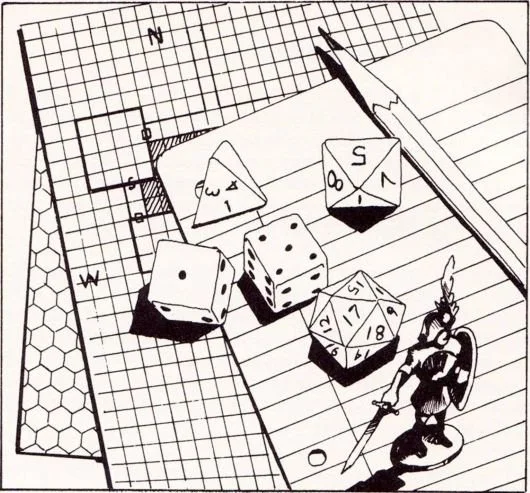
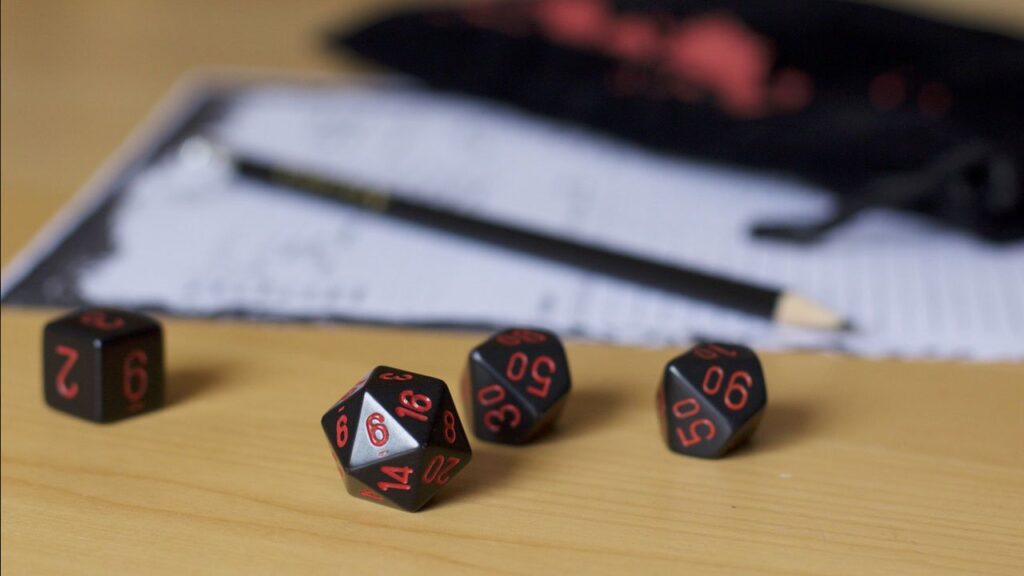
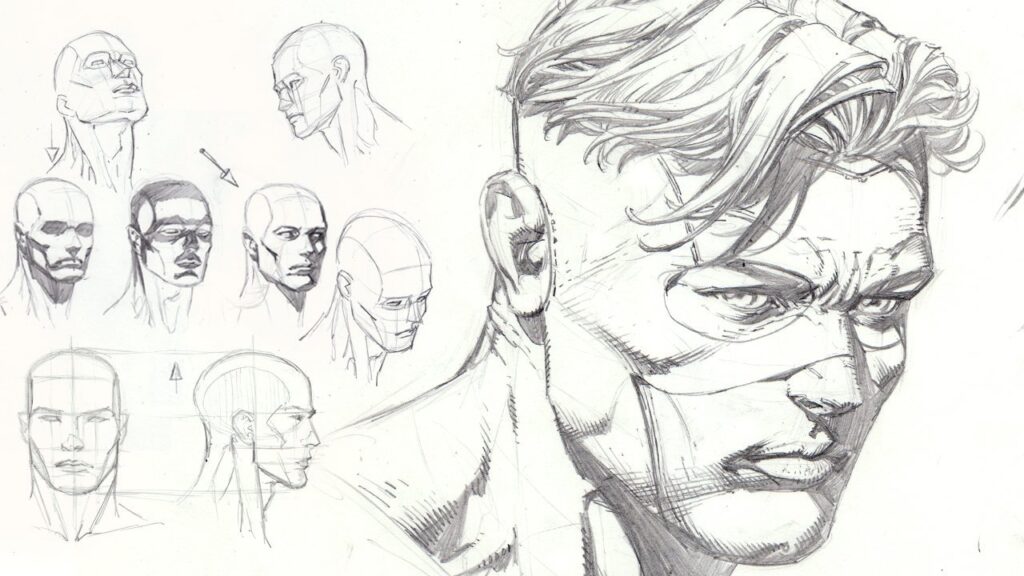
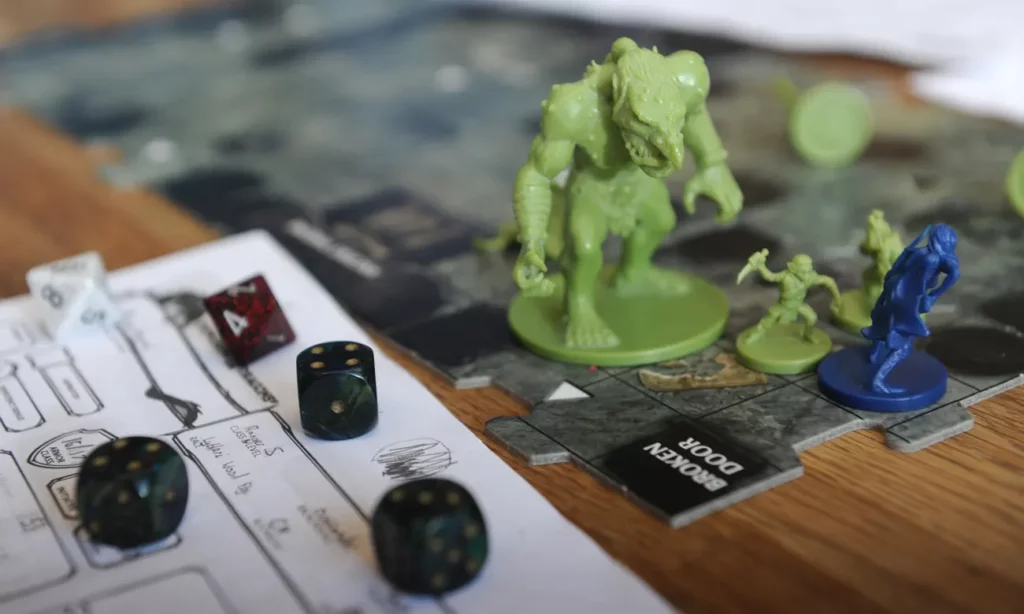

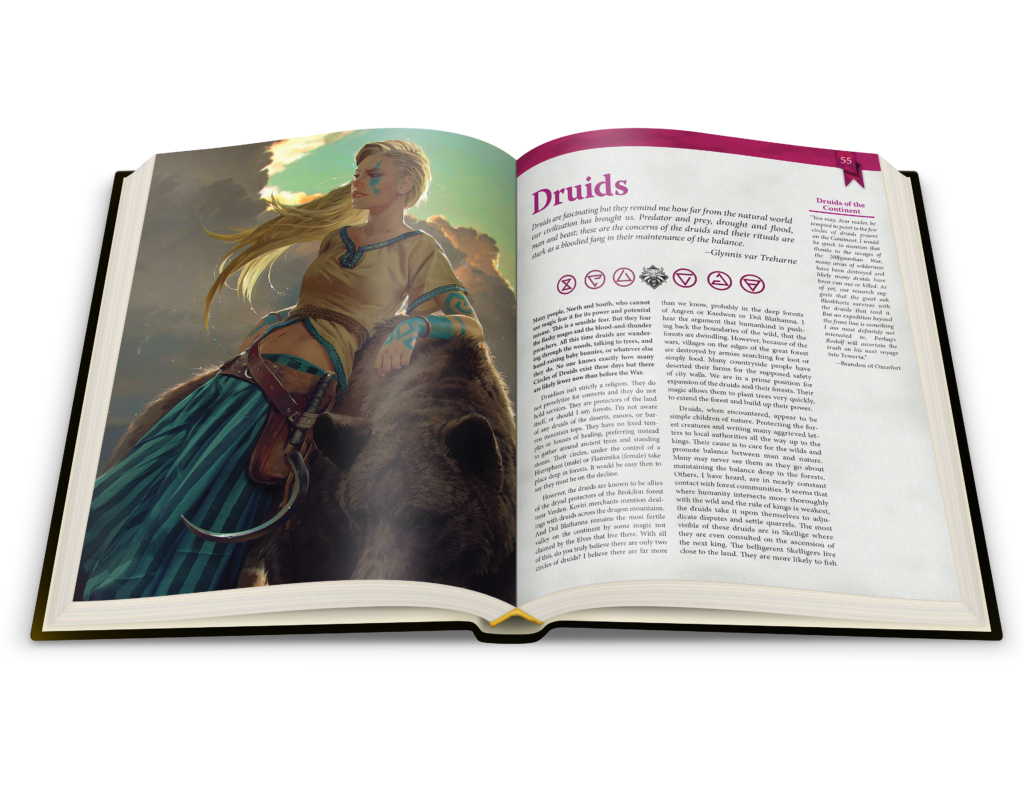
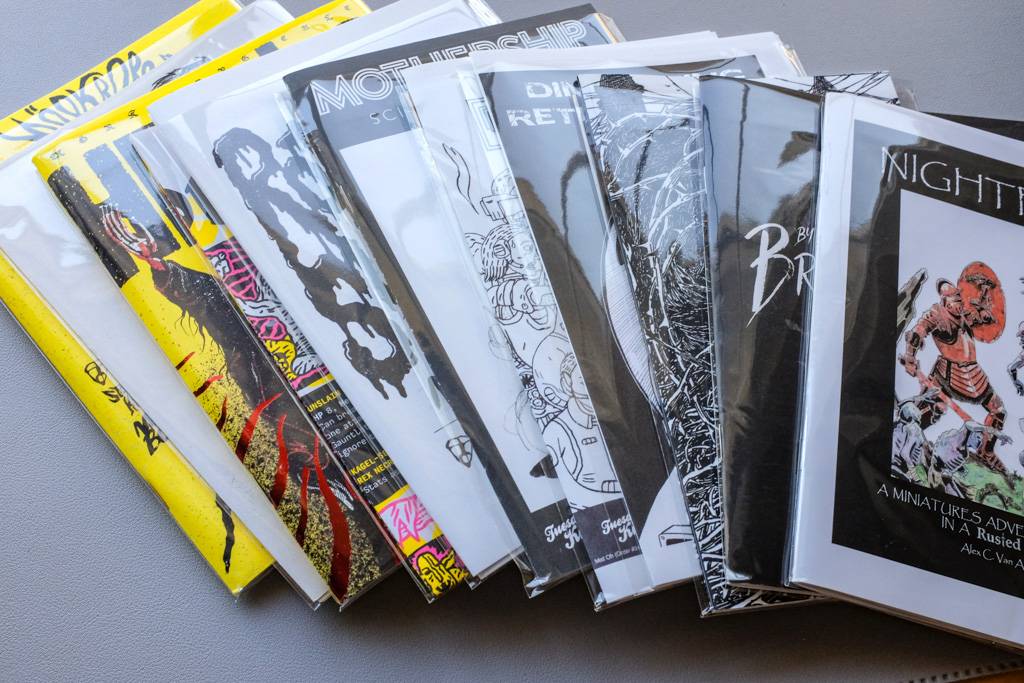
Are there guidelines on how to make (Feats, Traits, Talents)? You have Attributes then you have skills then there are Feats, Traits, and Talents. A 3rd kind of character ability that extends their skillset. Like in D&D Feats.. I’m looking for advice on how to write up such abilities.